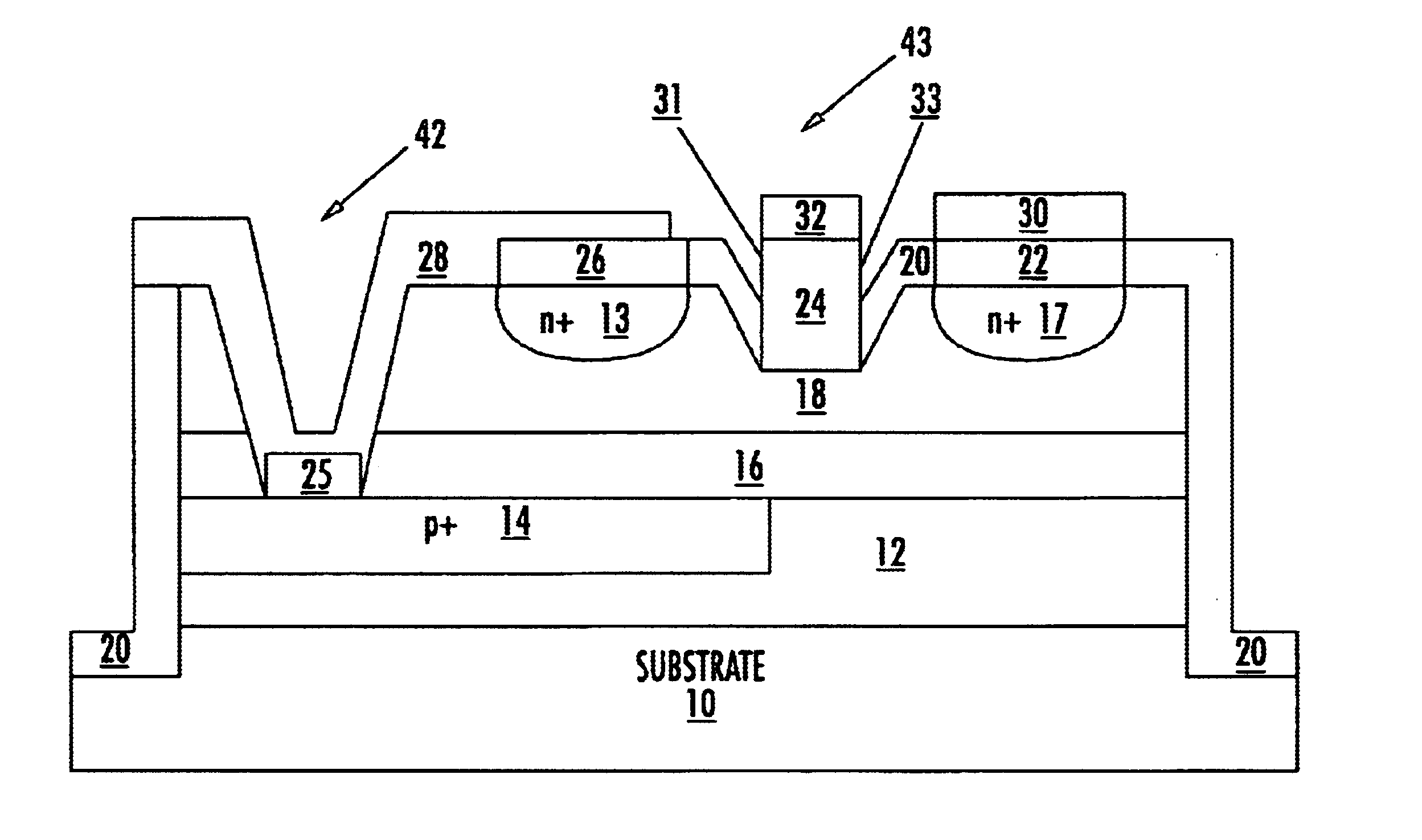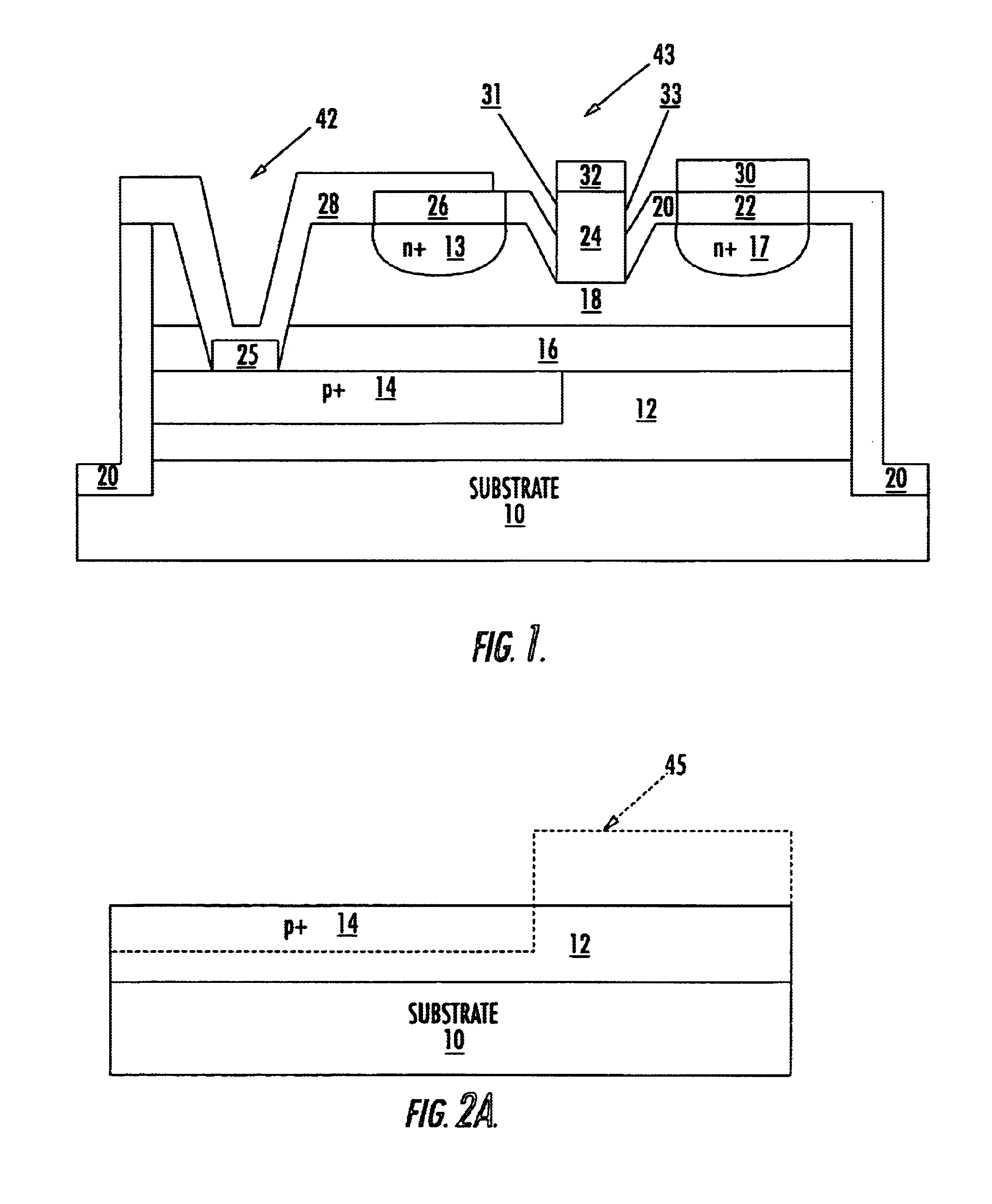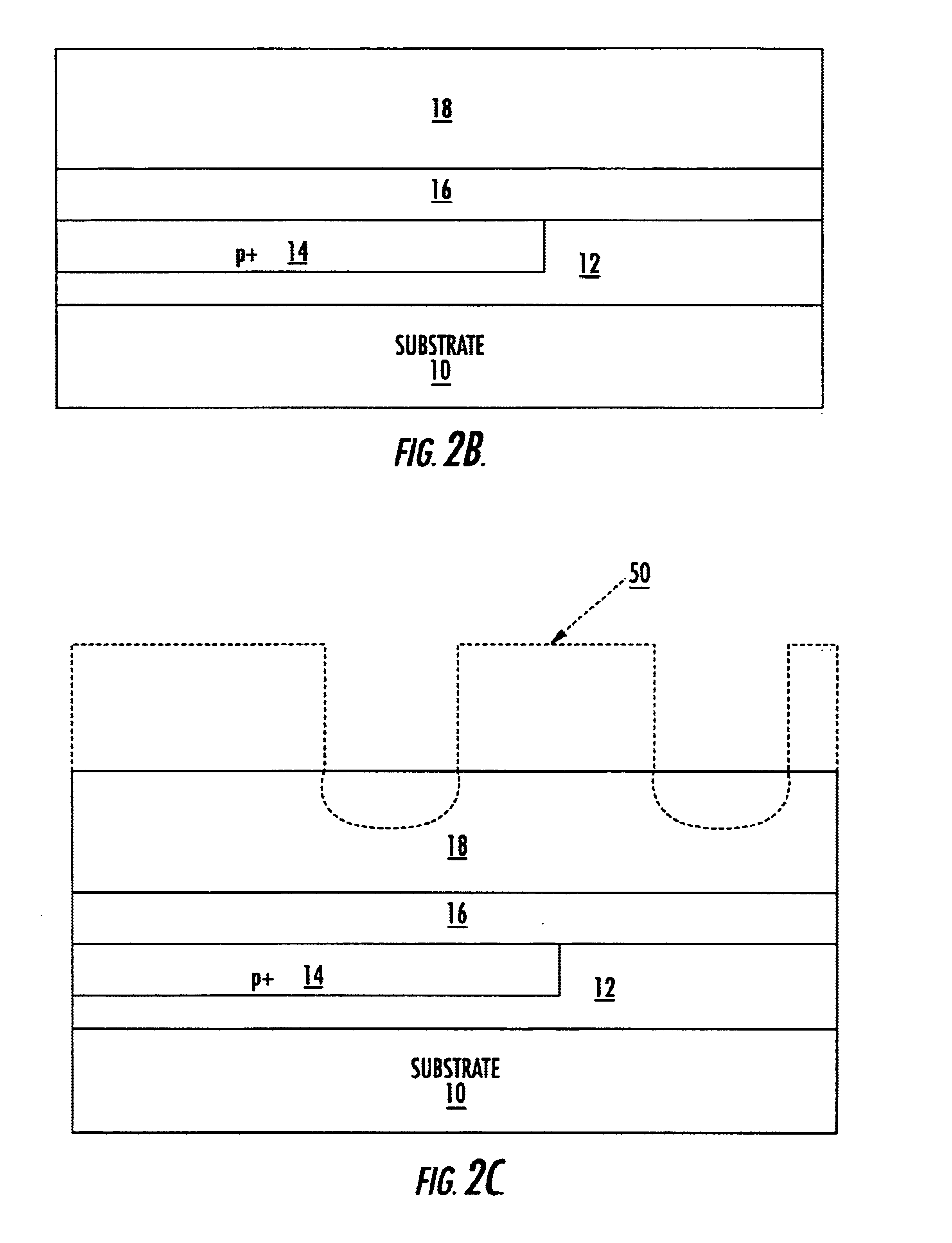Transistors having buried p-type layers beneath the source region
a technology of transistors and source regions, applied in the field of transistors, can solve the problems of limited power handling capability of such devices at higher operating frequencies, large heat generation of high-power and high-frequency transistors, and limited power handling capability of previously known jfets
- Summary
- Abstract
- Description
- Claims
- Application Information
AI Technical Summary
Benefits of technology
Problems solved by technology
Method used
Image
Examples
Embodiment Construction
[0041]The present invention will now be described with reference to the FIGS. 1 through 8B, which illustrate various embodiments of the present invention. As illustrated in the Figures, the sizes of layers or regions are exaggerated for illustrative purposes and, thus, are provided to illustrate the general structures of the present invention. Furthermore, various aspects of the present invention are described with reference to a layer being formed on a substrate or other layer. As will be appreciated by those of skill in the art, references to a layer being formed “on” another layer or substrate contemplates that additional layers may intervene. References to a layer being formed on another layer or substrate without an intervening layer are described herein as being formed “directly on” the layer or substrate. Furthermore, relative terms such as beneath may be used herein to describe one layer or regions relationship to another layer or region as illustrated in the Figures. It wil...
PUM
 Login to View More
Login to View More Abstract
Description
Claims
Application Information
 Login to View More
Login to View More - R&D
- Intellectual Property
- Life Sciences
- Materials
- Tech Scout
- Unparalleled Data Quality
- Higher Quality Content
- 60% Fewer Hallucinations
Browse by: Latest US Patents, China's latest patents, Technical Efficacy Thesaurus, Application Domain, Technology Topic, Popular Technical Reports.
© 2025 PatSnap. All rights reserved.Legal|Privacy policy|Modern Slavery Act Transparency Statement|Sitemap|About US| Contact US: help@patsnap.com



